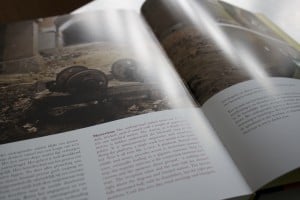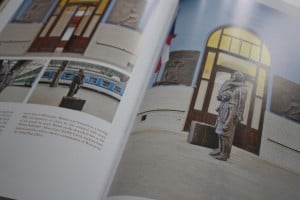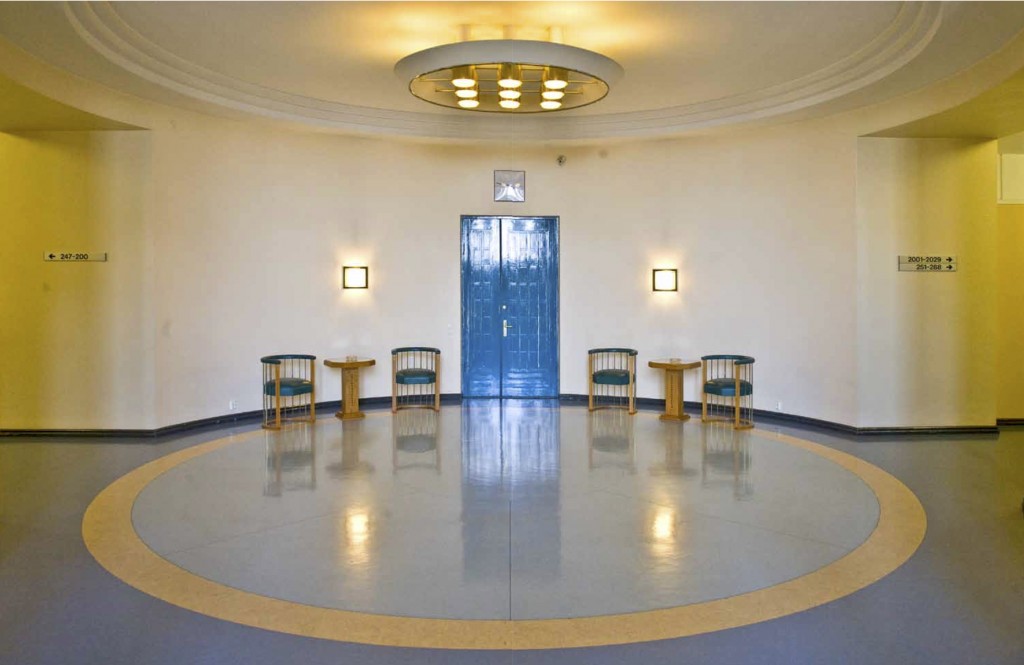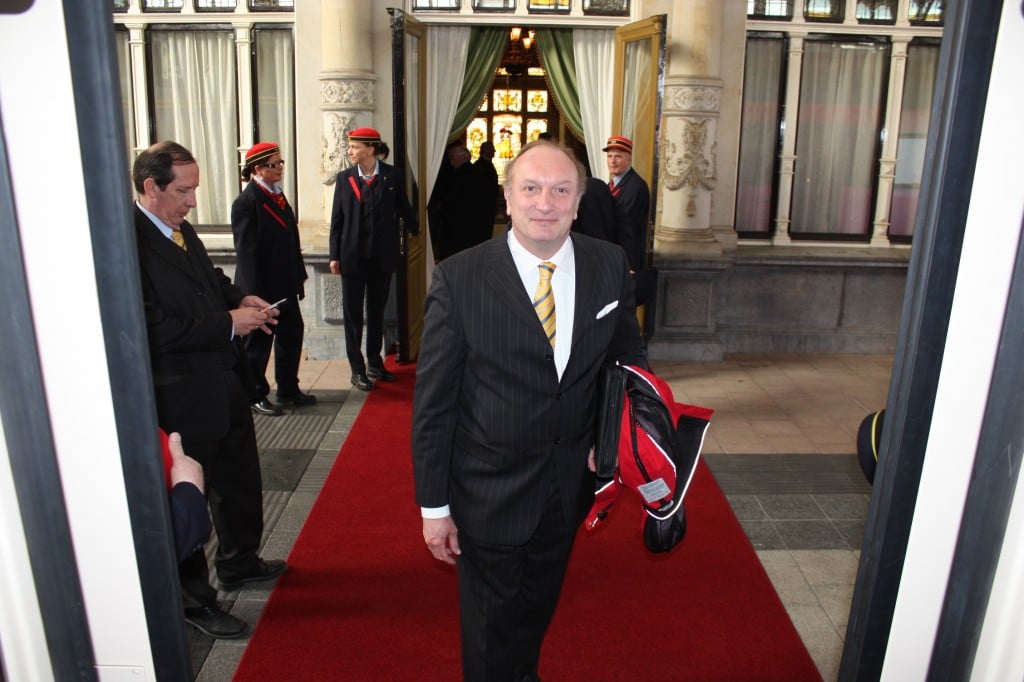Royals on Rails
If you walk along platform two in an easterly direction at Amsterdam Centraal station, near the first-class restaurant you will pass a high, golden wrought-iron fence. You have to pay attention, for it can easily be missed, but this fence is the entrance to one of the most beautiful treasures of the Dutch national railway: the royal waiting room.
From King Willem III to the present Dutch King 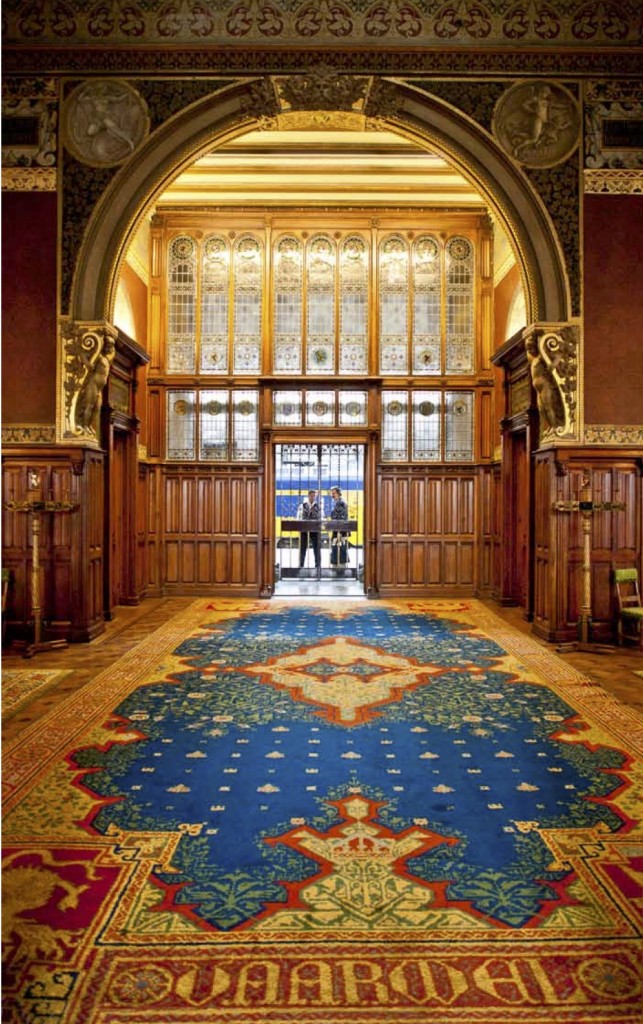 Willem-Alexander, every member of Dutch royalty has spent time in these chambers. ‘Everyone has to wait when they travel. Though being a royal, your train will always be exactly on time,’ Ton Honing tells us. As the head representative of the national railway, he is responsible for the upkeep of the royal waiting rooms and for accompanying the royal family when they travel by rail. He is also the editor of Koninklijke Wachtkamers (Royal Waiting Rooms, ed.).
Willem-Alexander, every member of Dutch royalty has spent time in these chambers. ‘Everyone has to wait when they travel. Though being a royal, your train will always be exactly on time,’ Ton Honing tells us. As the head representative of the national railway, he is responsible for the upkeep of the royal waiting rooms and for accompanying the royal family when they travel by rail. He is also the editor of Koninklijke Wachtkamers (Royal Waiting Rooms, ed.).
With a certain pride, Mr Honing invites me into the red velvet salon of the Amsterdam Centraal waiting room. Thanks to the efforts of him and his team, it has been recently restored. ‘When I was appointed in 2001, I cunningly ushered the newly appointed minister of transport and infrastructure into the waiting room and she was taken aback by the state it was in at the time. Within half a year, the funding for restoration was in place.’
Draw your sword
The street entrance is on the right side of the station’s facade, directly behind 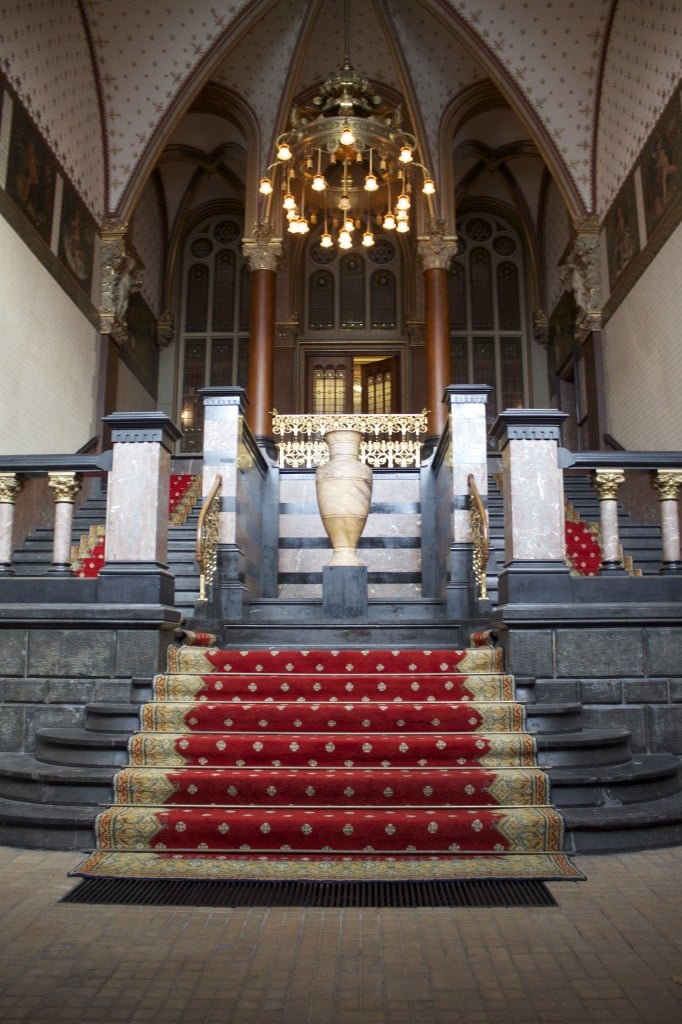 the tram stops on the east side, as Mr Honing points out. In earlier days, the royal carriage, drawn by four horses, used to drive all the way up to the porch. There, the family would get down and stride up the steps to the salon. ‘On the left side of the stairs, that was, because a royal always walk on his guest’s left side. The tradition tells that this way he can, without pinching his guest, draw his sword in case of danger.’
the tram stops on the east side, as Mr Honing points out. In earlier days, the royal carriage, drawn by four horses, used to drive all the way up to the porch. There, the family would get down and stride up the steps to the salon. ‘On the left side of the stairs, that was, because a royal always walk on his guest’s left side. The tradition tells that this way he can, without pinching his guest, draw his sword in case of danger.’
The royal waiting room in Amsterdam isn’t the only one of its sort. There are three more in The Netherlands: at Den Haag Hollands Spoor, Baarn and the Railway museum in Utrecht. And throughout the whole of Europe, the tradition of maintaining royal waiting rooms has resulted in a treasure trove of cultural heritage. This was the inspiration for Ton Honing to map all these historical locations across the continent.
Each European royal had their own room
‘There’s a rich history of these rooms throughout Europe,’ he tells us. From queens to dukes to emperors, each European ruler had his or her own waiting room constructed. ‘The history behind this tradition is intriguing. That was one of the premises of Koninklijke Wachtkamers. It’s a storyteller’s journey across Europe, through fifteen countries and by way of thirty-three stations.’
Each of the thirty-three waiting rooms is shown in a series of the most gorgeous photos. Some waiting rooms had never been captured in pictures before. Their stories are told from the construction stage to their heydays to their current function. Honing’s research turned up some very interesting stories, like that of the Belgian king Leopold, end of the 19th century. Because he wanted his guests to be able to get into his palace unseen, the monarch secretly commissioned the construction of a private station underneath the palace. He, however, never got to use his station, since he passed away before it was completed. The new king wanted nothing to do with his predecessor’s megalomaniacal behaviour.
Or there’s the story of Sir Nicholas Winton. Ton Honing explains: ‘The English diplomat and banker was personally responsible for the rescue of 669 Jewish children by hiding them in the royal waiting rooms of the Prague station and thereafter transporting them to England. His acts remained unknown until, in 1988, his own wife found documents about them in the attic.’ Sir Nicholas was knighted for his deeds at a reunion, organised by BBC, with the still living children (all in their seventies, eighties) and is now 105 years old.
The papal duty-free shop
The book describes the current uses of every station and every waiting room. ‘Wolferton Station, once the property of Queen Victoria but fallen into disuse, was bought by a certain Mr Brown in 2001. He restored the wooden buildings and now lives there. He proudly told me: “I wasn’t born a royal, but I do live regally.” And as another example, take the papal waiting room in the Vatican, which was entirely redesigned into a duty-free shop. Tourists, priests and nuns can buy products of the most well known expensive high-end brands.’
Besides recounting the background stories, Koninklijke Wachtkamers also gives us a peek from a history-of-art perspective into the style of royal interiors. One of the high points is the fin de siècle allure of the Parisian Gare de Lyon, nicknamed ‘Le Train Bleu’, where today you can buy a cup of coffee for 10 euros. The imperial waiting room in Potsdam, Germany is also fascinating. Almost militaristically decorated, this was the station serving Wilhelm II’s summer retreat. Whereas in Scandinavia, you find very different art styles, for example the Finnish waiting rooms where Jugendstil (German art nouveau) dominates and the interior design integrates mathematical and geometrical forms.
‘Look Mr Honing, prince Claus was born there’
The Dutch waiting rooms have recently been opened to the public, though on a limited basis. ‘For a long time the family haven’t been very keen on the public taking an interest. Today the royals still makes use of the rooms a few times a year for state visits and formal railway openings.’
When the royals travel by rail, Mr Honing is their host. His most memorable journey was the one to Denmark in 2010. ‘King Willem-Alexander and Queen Màxima – then prince and princess – had to travel to Denmark while air traffic was shut down because of the Icelandic volcano eruption. Former Queen Beatrix was traveling along as well. The day before, an exhibition of royal travel had opened in the railway museum. Various royal trains from everywhere in Europe were brought to the museum, as well as the Dutch one sent by Queen Beatrix herself.’
‘The morning after the opening ceremony, the equerry called. The royal train had to be brought out of the museum to transport the royals to Denmark. Hastily, everything was prepared and at exactly one minute after seven that evening, the train departed. Normally, there is a complete travel schedule on board, showing the rail signals and times; now I was only carrying a notebook with the telephone numbers of the local railway managers. I called every one of them when we were approaching their patch. What’s more, there was no time to buy a rail map of Europe, so I brought my car map and outlined our route on the map during the journey. The queen took a great interest and I indicated our progress on the map. Following the route, she pointed out places of importance to her. “Look Mr Honing,” she said, pointing at the map, “Prince Claus was born there.”’
You can buy ‘Koninklijke Wachtkamers’ (with English translation) for 39.95 euro at Rage BV Groningen, Netherlands (003150-5491105, [email protected]).
________________
By Anne Brugts, content manager Story Terrace
About us: Story Terrace helps customers to capture personal stories in beautiful books alongside a professional writer. Our writers have a range of backgrounds and interests, sharing one passion: Portraying individuals through carefully crafted anecdotes and lively stories.
For more information on having your stories written down, send an e-mail to info@ or get in touch via our contact form.
This month we serve up stories in our monthly theme ‘Romance of the Railways’. Also read our article about 19th century traveller Simon van Gijn. What’s your fondest memory of train travel?

